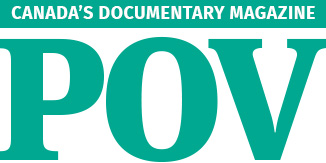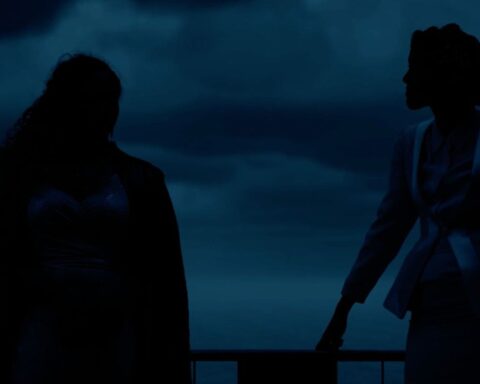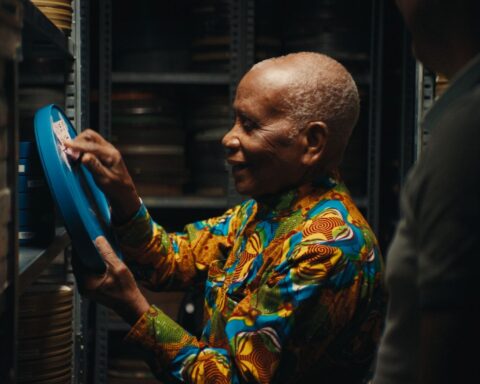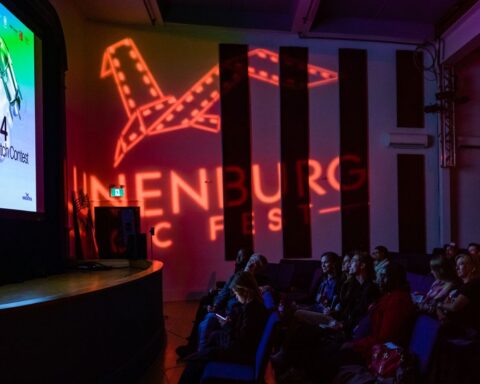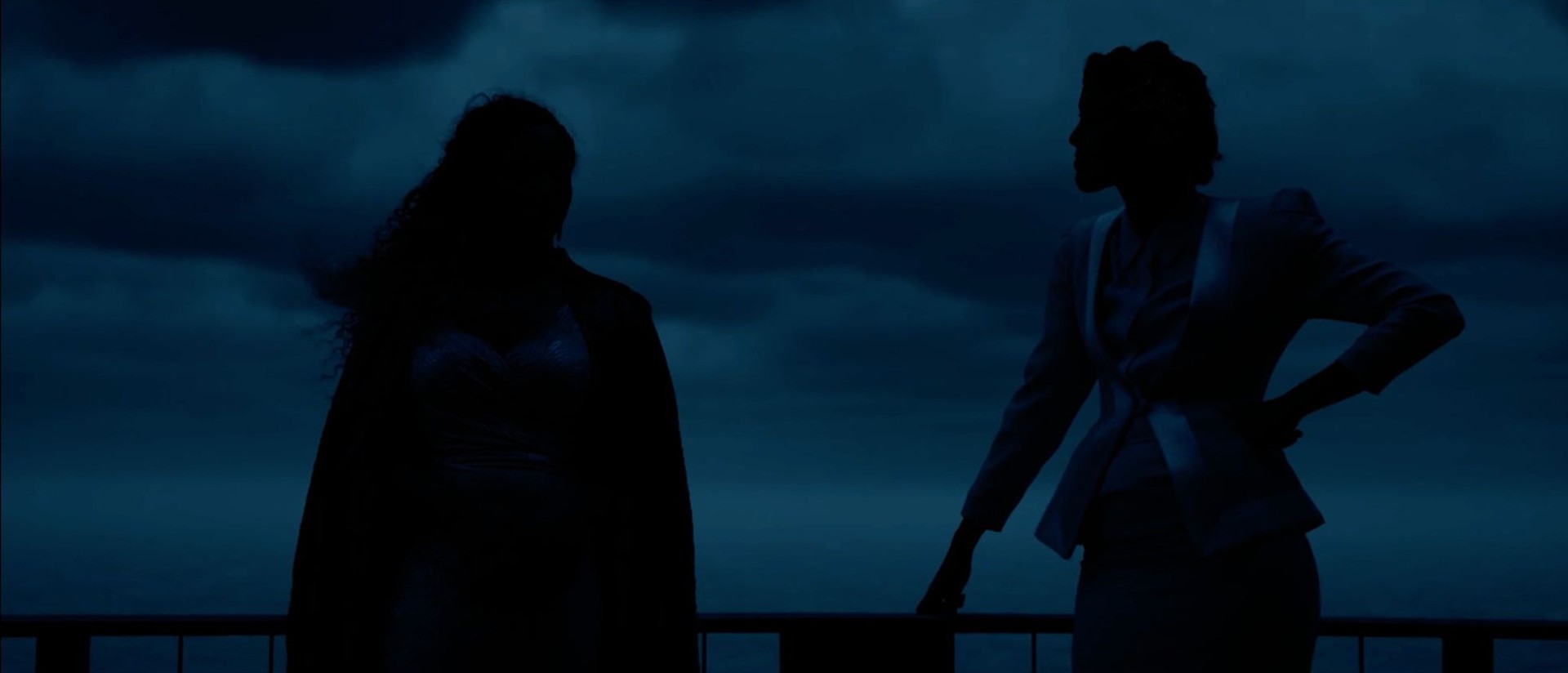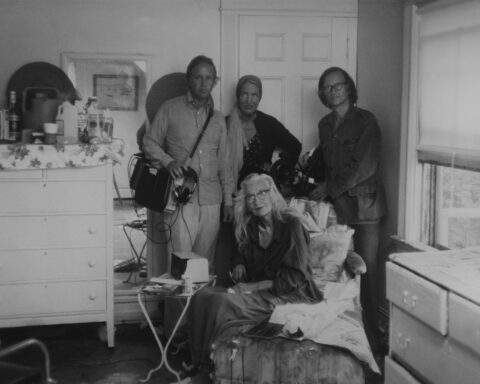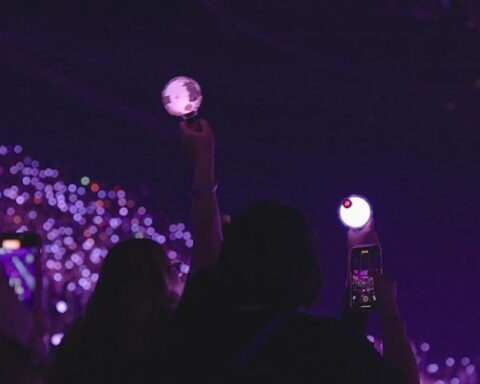On the short doc side of this year’s Toronto International Film Festival (TIFF), audiences can expect some big surprises. The line-up includes seven short docs drawn from over 600 submissions—which represent a mere fraction of the nearly 5,500 submissions the Short Cuts team received this year. Short Cuts also boasts two new programmers in Sonja Baksa and Mariam Zaidi after veteran shorts programmer Jason Anderson moved to the Canadian features team. The programme promises a strong sense of curation, films that cross boundaries, and a new award to recognize the range of short filmmaking.
Among the documentary highlights is Netflix’s All the Empty Rooms (Short Cuts 6) from director Joshua Seftel, whose Stranger at the Gate (2022) scored an Oscar nomination. He could make himself an early favourite again for what reads like a harrowing snapshot of one of America’s recurring tragedies: school shootings. The film, executive produced by Adam McKay (The Big Short) and a who’s who from documentary, follows journalist Steve Hartman and photographer Lou Bopp over seven years as they visit and observe the bedrooms of children killed in such events. Zaidi says All the Empty Rooms approaches a sadly familiar story from a completely new perspective that remains respectful.
“It asks us to honour the memories of the children that have been lost to the school shootings. We visit families that have been mourning for many years and we are in the rooms of these children, which have remained the same since the last day those children were in those rooms,” says Zaidi. “The parents are touched by the compassionate way in which Steve and Lou have chosen to highlight their stories and honour the memories of these children, who the parents feel are a bit forgotten because it’s been so long since some of these shootings happened—and, sadly, so many of these have happened.”
While the features side of the documentaries at TIFF boasts an emphasis on journalists and truth tellers bringing topical stories to light in the way at Hartman and Bopp do in All the Empty Rooms, Baksa says that audiences can see a complementary theme among the shorts.
“We see them individually as we make our selections and review the films, but then ultimately weigh them against each other as we make those final selections because we want a variety of themes covered a variety of perspectives and a variety of formats presented,” Baksa notes on the selection process. “But, inevitably, in whatever the final selection is, there will always be certain through lines. Sometimes it reflects the current landscape—and cultural and political landscape.”
One film that reflects the immediacy of truth-telling, or perhaps the elusiveness of truth-telling, is Asparagus Bear (Short Cuts 3). The documentary directed by Ivan Grgur and produced by Nebojša Slijepčević, whose TIFF ’24 drama The Man Who Could Not Remain Silent won the short film Palme d’Or at Cannes last year and scored an Oscar nomination, takes audiences to a small Mediterranean town where an alleged bear appearance during asparagus season has residents comparing fish stories.
“That film in particular is kind of documenting hearsay among locals in this small town in Croatia where there is an apparent bear sighting. Everyone is presenting their take on how this happened and what that means for the wider community,” says Baksa. “There’s all sorts of speculation and it reveals the deeper truth about how we process stories. Everyone then threads their own sensibility into it, so by the end of the film, you no longer know whether there was even a bear sighting.”
Another film that artfully brings truths to light is Fiction Contract (Short Cuts 4) from multidisciplinary artist Carolyn Lazard. The film takes audiences to New York City’s Elmhurst Hospital and introduces them to Jada, the first Black mannequin in a birthing simulation. Lazard steps back to let audiences observe the state of Black maternal healthcare by watching the simulation in full. “What’s fascinating about that film is that it was initially presented in gallery space as part of an exhibition, but it also is a standalone film on its own merit,” says Baksa. “It’s also another version of presenting the truth.”
Fiction Contract demonstrates how Short Cuts can be one corner of the festival where audiences encounter new approaches to film form. Zaidi cites another example in Dorothy Sing Zhang’s hybrid documentary A Small Fiction of My Mother in Beijing (Short Cuts 1). “It takes a really interesting approach to the personal film,” says Zaidi. “It’s about her mom, who’s a famous Chinese opera singer, and it looks at her mom navigating her career and her family. It treads that space between documentary and hybrid documentary filmmaking in a really interesting way and has a really beautiful perspective.” Zhang was at the festival last year with the dance drama Masterpiece Mommy, and Zaidi says her new film builds upon the promise that TIFF goers saw previously.
So too does TIFF Short Cuts alum Isabelle Mecattaf. Her Not Scared, Just Sad (Short Cuts 2) offers a personal and observational glimpse at her family in Beirut as they survive the November 2024 Israeli bombings. “It’s looking at her family as they are on the periphery of war and are living in shock and grief,” says Zaidi. “She uses split screen in a really interesting way and juxtaposes people trying to go on with their daily lives, but also being completely unable to do that. It brings us into that jarring experience of needing to live your life, but also knowing that it’s not going to be the same.”
Another Short Cuts alumnus returning to TIFF is director Patrick Xavier Bresnan after 2023’s poignant The Passing. He serves as director solo on The Contestant (Short Cuts 5) while his usual co-director Ivete Lucas (Pahokee) assists as producer. The Contestant marks a shift from the director’s observational style as he looks to the archives and digs out a tape from a 1990s’ contest in which he won a special prize: visits to the set of Baywatch, a topical choice in light of Pamela Anderson’s career renaissance after last year’s TIFF breakout The Last Showgirl. Baksa says The Contestant mixes lo-fi archival with flashy snippets from Baywatch to contrast lenses through which Bresnan saw the hit show.
“It gives us a really good sense of that fan culture excess that was so prevalent in the nineties, especially around the show,” she says. “But then now as we have evolved in the many ways in which we consume pop culture and [understand] the ways women are objectified, it provides a different lens on that aspect. That’s very exciting for us to see from filmmakers who are examining their own practice, and especially documentary filmmakers who end up using parts of their personal lives.”
Short Cuts also reminds audiences that every film deserves the big screen experience no matter how small the running time. Divers (Short Cuts 6) from director Geordie Wood, for example, takes audiences to thrilling heights by observing leaps from high diving towers. “It observes divers through breathing exercises to stretching through shots of the platform, and then it all builds to the jump, which showcases the athleticism and the perfect form that they’re aiming to achieve,” says Baksa. “I would say this is reflected in the film’s form as well, because the way the shots are composed complements this strive for the perfect human form. Visually, it’s so indulgent.”
With a running time of only seven minutes, the programmer says it’s among the first films she chose for the festival and one to which she’s returned throughout the submission process. “It’s always great for programming shorts when you have a seven-minute film, but in this case, its wonderful little arc gives us insight and it’ll probably come as a bit of respite in cinema. It’s a beautiful piece.”
Beyond the docs, Short Cuts features some films that straddle the gray area between fiction and non-fiction, like Heather Young’s A Soft Touch (Short Cuts 6), which brings her back to TIFF after her FIPRESCI prize winning breakout Murmur. The film observes the situation of a woman in a seniors’ home amid financial precariousness. “This film definitely takes on the docu-fiction approach familiar to Heather Young’s work,” says Zaidi. “It takes a look at the loneliness and the fragility of security that people living on the margins experience when there isn’t a lot of support in terms of services or people or community.” Other films that dance with fiction and non-fiction include the mockumentary Ramón Who Speaks to Ghosts (Short Cuts 1) by Shervin Kermani and I Fear Blue Skies (Short Cuts 2) by Salar Pashtoonyar. “It’s a fiction film, but it references a real story,” notes Zaidi of the latter.
Similarly, fans of Wim Wenders’ 3D dance film Pina can enjoy the doc-adjacent animated film The Death of the Fish (Short Cuts 6), directed by Eva Lusbaronian.
The meditation on grief draws upon the choreography of Pina Bausch. “There’s gorgeous choreography with the mother and daughter in the film, and the soundtrack is unforgettable,” says Zaidi. “It’s so moving, and we hadn’t seen anything like that in animation. It’s a real standout.”
The Death of the Fish illustrates why TIFF is adding a Best Animated Short Film Award to its slate of prizes this year. Baksa says the new award inspired closer looks at animated submissions to encourage the team to embrace formally daring works. “What we were striving for is a variety of techniques, voices,” she notes.
Zaidi says the roster of 10 animated films runs the gamut, with particularly daring works like Praying Mantis (Strange Cuts) and Arguments in Favour of Love (Short Cuts 5) offering distinctive works in the programme.
One other such film, finally, is the NFB short The Girl who Cried Pearls (Short Cuts 1) from Chris Lavis and Maciek Szczerbowski, the duo behind the Oscar nominated and Genie-winning Madame Tutli-Putli. “This is our only stop motion animation in the lineup, and it is a really lavish production that subverts the fairy tale trope and becomes a cautionary tale of greed and susceptibility. I’m sure it will also look great on the big screen,” says Baksa.
TIFF runs Sept. 4 to 14.
